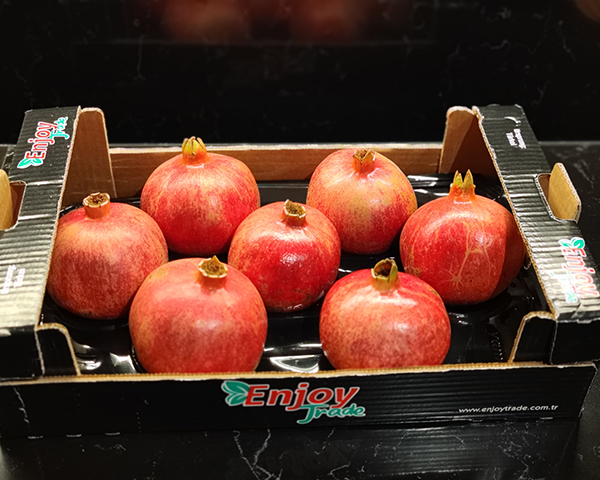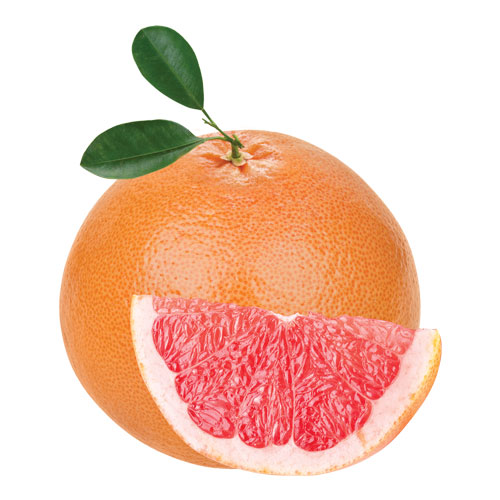Grapefruit

Grapefruit, known for its vibrant colors and tangy-sweet taste, is a citrus fruit enjoyed worldwide. Its refreshing flavor is used in a variety of dishes and drinks, from breakfasts and salads to desserts and beverages. Grapefruits are particularly valued for their high content of vitamin C, vitamin A, fiber, and antioxidants, making them highly beneficial for health.
The origin of grapefruit dates back to the mid-18th century and is believed to have originated in the West Indies, particularly in Barbados. Grapefruit is a natural hybrid of the orange and pomelo, and it has spread globally over time. Today, grapefruits are grown in many warm climates, with leading producers including the United States (especially Florida, Texas, and California), Israel, South Africa, and Brazil.
Grapefruit trees thrive in warm, sunny climates and require well-drained, fertile soil to grow optimally. The ideal growth temperature ranges between 25-30°C. While grapefruit trees can withstand short periods of cold, they are sensitive to frost, which can damage the trees and reduce the yield. Therefore, grapefruits are primarily grown in regions with mild winters.
Growing grapefruits typically begins with planting seeds or young saplings. Professional growers often prefer planting grafted saplings as they bear fruit faster and offer higher yields. The soil in which grapefruit trees are planted should be well-drained and rich in organic matter. The soil pH should range between 6.0 and 7.0. Adding compost or other organic fertilizers can enhance soil fertility and support the growth of the trees.
Regular watering is crucial for grapefruit trees, especially during dry periods. The soil should remain consistently moist, but overwatering must be avoided to prevent root rot. Good drainage is essential to ensure that excess water can quickly drain away. Additionally, it is important to fertilize the trees regularly with a balanced fertilizer rich in nitrogen, phosphorus, and potassium. This helps keep the trees healthy and ensures good fruit production.
Pruning is another important aspect of grapefruit tree care. Removing dead or diseased branches can improve air circulation and help prevent fungal diseases. Thinning out densely grown parts of the tree can also contribute to better fruit development and higher yields.
Grapefruits are harvested when the fruits are fully ripe and have a bright color. This usually occurs a few months after flowering, depending on the variety and growing conditions. The fruits should be harvested carefully to avoid damage. Grapefruits can remain on the tree until needed, as they are more durable than many other fruits.
Grapefruits have a wide range of culinary uses. They are often eaten fresh for breakfast, in salads, and as a raw fruit. Grapefruit juice is popular in beverages such as lemonade and cocktails. The zest of the grapefruit is used in desserts, jams, and marmalades. Additionally, the unique aroma of grapefruit adds flavor to many dishes and drinks.
Grapefruits also offer numerous health benefits. Rich in vitamin C and antioxidants, grapefruits help boost the immune system, support skin health, and have overall positive effects on health. Grapefruits are also low in calories and high in dietary fiber, which supports digestion and aids in weight management.
In conclusion, grapefruit is a versatile and valuable fruit that holds an important place in kitchens worldwide. With its tangy-sweet flavor that brightens dishes, its health benefits, and its various uses, grapefruit continues to be an essential part of daily life. Growing grapefruits requires care and attention, but the reward is abundant harvests and endless possibilities for culinary and health-related uses. Grapefruit will continue to hold its place on tables with its flavor and nutritional value.
Packaging

CARDBOARD BOX 30X50X12

PLASTIC CASE 30X50X12
Enjoy Trade Consultancy prioritizes quality in the product shipping process, maintaining its priority in meeting customer demands and ensuring satisfaction.
In this context, it offers its customers various packaging options such as CARDBOARD BOX 30X50X12 or PLASTIC CASE 30X50X12, so that each customer has the freedom to choose a shipping method that suits his needs and preferences.
Season Information
| January | February | March | April | May | June | July | August | September | October | November | December |
|---|---|---|---|---|---|---|---|---|---|---|---|
 |  |  |  |  |  |  |  |  |  |  |  |

